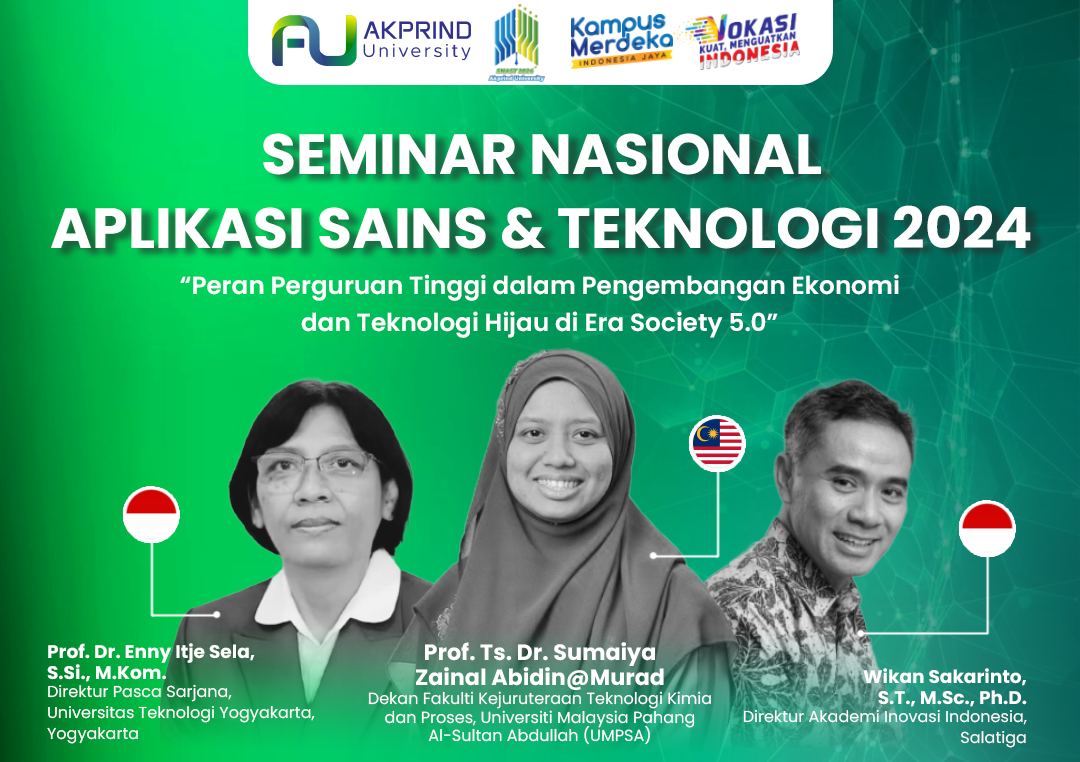STUDI PEMANFAATAN CAMPURAN MATERIAL WASTE PADA PRODUKSI BENANG POLYESTER: PERBANDINGAN BLEND RATIO TERHADAP KUALITAS
DOI:
https://doi.org/10.34151/prosidingsnast.v1i1.4974Abstract
Textile industry is a big industrial sector which produces wastes in its processes, including the initial process of textile, the yarn spinning manufacturing. Yarn spinning process converts raw material of fibers into yarn, it also produces waste in each stage of the production. Waste generated from the blowing to winding process has various characteristics and properties. This study aims to identify waste generated in the polyester yarn spinning process and make a categorization of waste, based on the characteristics of waste: whether it can be reused or cannot be reused (called Unused). Waste sorting process parameters are also determined to be able to produce waste material that is ready to be reused for the yarn production. The mixing of waste material and original non-waste material is then used for production with 3 combinations of blend ratio, showing the percentage of waste content in each material mixing. After the mixing process, material is manufactured to produce finished yarn. Yarn quality testing is performed to test the effect of waste material mixtures on the yarn quality itself. The quality parameters involved are yarn unevenness, neps and trash contents. The test results show that the results of the material mixture for the 3 type of blend ratio meet the company’s quality standards. To conclude, it is as expected that the lower the waste percentage, the higher the yarn quality. However, in order to optimize waste usage, as high as 3.2% waste still can be utilized while maintaining the yarn quality standards.
References
Arafat, Y., & Jalal, A. (2022). Heliyon Recycled fi bers from pre- and post-consumer textile waste as blend constituents in manufacturing 100 % cotton yarns in ring spinning : A sustainable and eco-friendly approach. Heliyon, 8(October), e11275. https://doi.org/10.1016/j.heliyon.2022.e11275
Béchir, W., Béchir, A., & Mohamed, B. H. (2018). (2018). INDUSTRIAL COTTON WASTE : RECYCLING , RECLAIMED FIBER BEHAVIOR AND QUALITY PREDICTION OF ITS BLEND. 28(11), 14–20.
Goyal, A. (2021). Management of spinning and weaving wastes. Waste Management in the Fashion and Textile Industries, 61–82.
Kadnikova, O., & Nurmukhambetova, B. (2022). Optimization of Technology for the Use of Spinning Waste in Yarn Production. 26(1), 1080–1091.
Kanan, M., Wannassi, B., Barham, A. S., Hassen, M. Ben, & Assaf, R. (2022). The Quality of Blended Cotton and Denim Waste Fibres : The Effect of Blend Ratio and Waste Category.
Krupincov, G. (2024). Heliyon Assessment of the effects of the use of preconsumer cotton waste on the quality of rotor yarns. 10(February). https://doi.org/10.1016/j.heliyon.2024.e34482
Liu, W., Liu, S., Liu, T., Liu, T., Zhang, J., & Liu, H. (2018). Eco-friendly post-consumer cotton waste recycling for regenerated cellulose fibers. Carbohydrate Polymers. https://doi.org/10.1016/j.carbpol.2018.10.046
Liu, Y., Huang, H., Zhu, L., Zhang, C., Ren, F., & Liu, Z. (2020). Could the recycled yarns substitute for the virgin cotton yarns : a comparative Could the recycled yarns substitute for the virgin cotton yarns : a comparative LCA. September. https://doi.org/10.1007/s11367-020-01815-8
Stanescu, M. D. (2021). State of the art of post-consumer textile waste upcycling to reach the zero waste milestone. 14253–14270.
Ute, T. B., Celik, P., & Uzumcu, M. B. (2019). Utilization of cotton spinning mill wastes in yarn production. Textile Industry and Environment, 85, 13–17.
Wanassi, B., Azzouz, B., & Ben, M. (2016). Value-added waste cotton yarn : Optimization of recycling process and spinning of reclaimed fibers. Industrial Crops & Products, 87, 27–32. https://doi.org/10.1016/j.indcrop.2016.04.020
Yousef, S., Tatariants, M., Tichonovas, M., & Kliucininkas, L. (2020). Sustainable green technology for recovery of cotton fi bers and polyester from textile waste. 254. https://doi.org/10.1016/j.jclepro.2020.120078
Downloads
Published
Issue
Section
License
Copyright (c) 2024 Hasna Khairunnisa, Firda Innayah, Eki Dian Lestari, Agus Ardiyanto

This work is licensed under a Creative Commons Attribution-ShareAlike 4.0 International License.







